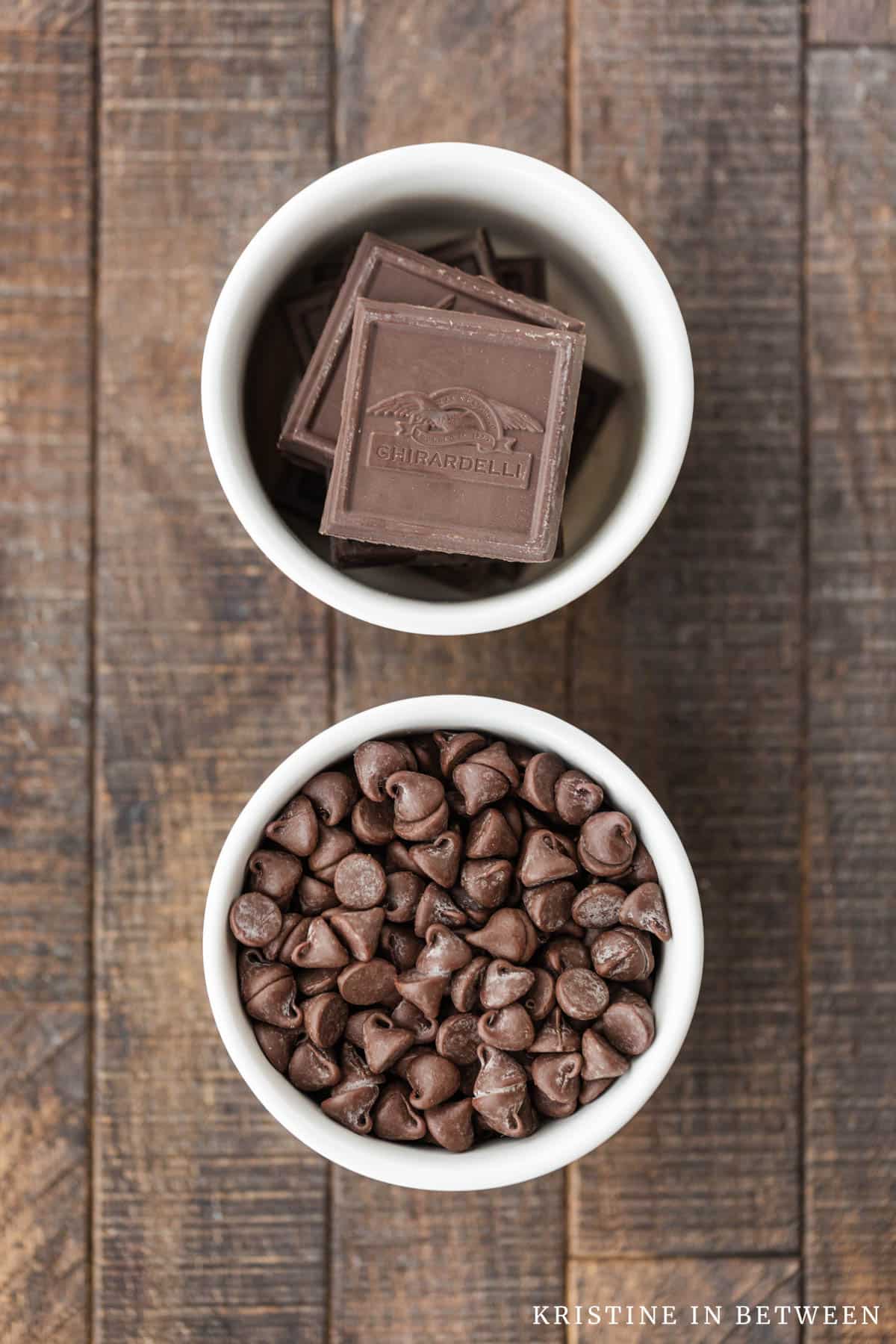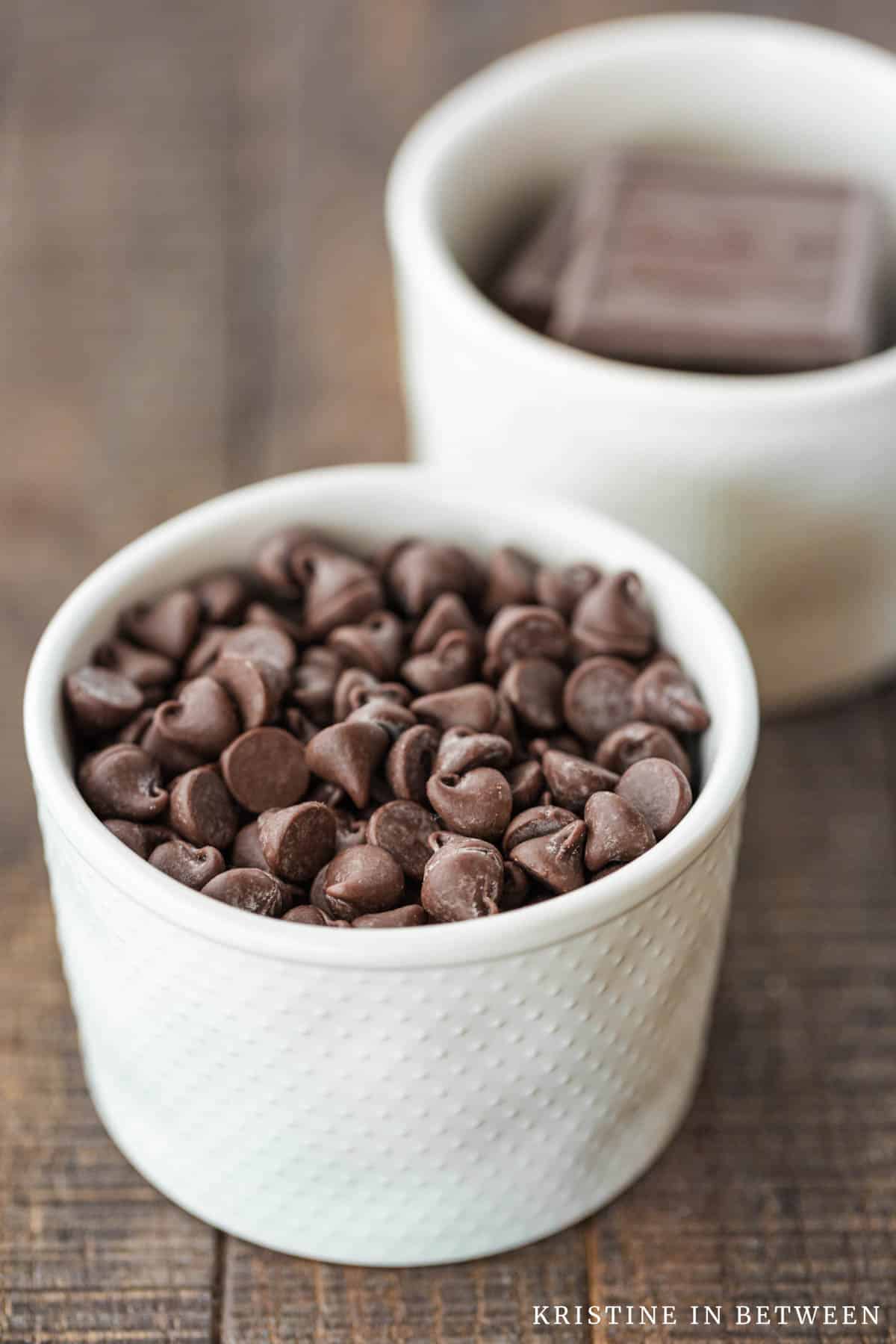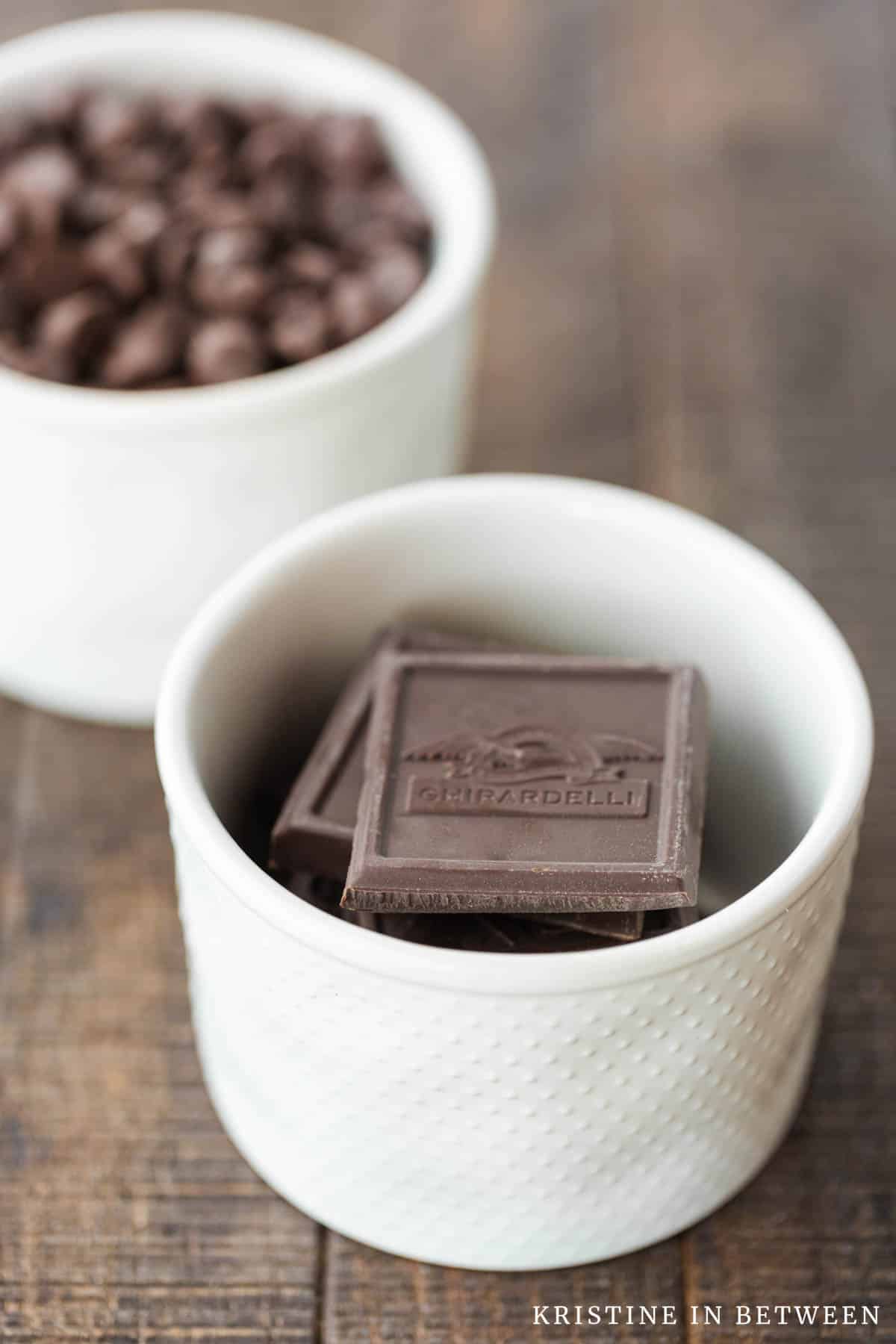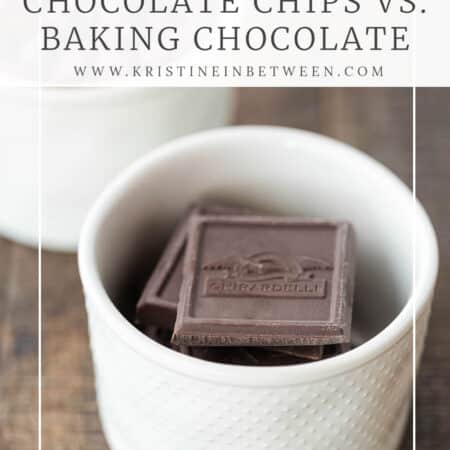What’s up chocolate enthusiasts? Have you ever found yourself in the baking aisle, staring at shelves full of chocolate options, wondering which one to pick for your favorite chocolate chip cookie recipe? What’s the difference between chocolate chips and baking chocolate?
Well, you’re in luck, my friend. Today is all about chocolate. Chocolate chips and baking chocolate specifically. We’re exploring their differences, and deciding when to use each one to make your chocolate goodies even chocolatey-er (I just made that up, but I like it).

Chocolate Chips:
First up, let’s talk about chocolate chips. These little morsels are a staple in most home bakers’ pantries. They’re known for their versatility and ease of use, making them perfect for a variety of recipes.
1. Composition: Chocolate chips are specifically formulated to maintain their shape when baked. They contain stabilizers that help them hold their form and not melt completely. Typically, they’re made with a combination of cocoa solids, cocoa butter, sugar, and sometimes, added stabilizers or emulsifiers.
2. Size and Shape: Chocolate chips are small, uniform, and come in a classic teardrop shape. This consistency ensures even distribution in your baked goods, making them perfect for cookies, muffins, and brownies.
3. Melting Behavior: One key characteristic of chocolate chips is that they maintain their shape when heated. They soften but do not turn into a gooey mess, making them ideal for recipes where you want pockets of chocolate, like chocolate chip cookies.
When to Use Chocolate Chips:
- Cookies: Chocolate chip cookies are a classic example. The chips hold their shape and give you those delightful bursts of chocolate in every bite.
- Muffins and Brownies: Chocolate chips can be folded into muffin or brownie batter for a sweet surprise in each serving.
- Decorations: They’re perfect for decorating cakes, cupcakes, and other desserts since they maintain their shape when sprinkled on top.

Baking Chocolate:
Now, let’s move on to baking chocolate. This is essentially pure chocolate in bar or block form, without added sugar or stabilizers. It’s a chocolate lover’s dream, but it requires a bit more finesse in the kitchen.
1. Composition: Baking chocolate is made from cocoa solids and cocoa butter, and that’s about it. It’s unsweetened and lacks the additives found in chocolate chips.
2. Texture: Baking chocolate comes in various textures, from unsweetened bars to semisweet or bittersweet varieties. The texture can range from smooth to coarse, depending on the cocoa content.
3. Melting Behavior: Baking chocolate melts smoothly and evenly, making it ideal for recipes where you want a rich, chocolatey base. It’s perfect for ganache, sauces, and brownie batter.
When to Use Baking Chocolate:
- Brownies: If you want intensely chocolatey brownies, use baking chocolate. Melt it with butter and incorporate it into your batter for a deep chocolate flavor.
- Ganache: Baking chocolate is the star of chocolate ganache. It melts beautifully, creating a luscious, glossy topping for cakes and pastries.
- Sauces: When making chocolate sauces for drizzling over ice cream or fruit, opt for baking chocolate to achieve a silky consistency.
- Cookies: When you want the chocolate to melt into the cookie versus holding its shape.

So, in the battle of chocolate chips versus baking chocolate, the winner actually depends on your recipe and the desired outcome. Chocolate chips are your go-to for maintaining shape and texture in baked goods like cookies, muffins, and of course for decoration.
But on the other hand, baking chocolate is the answer when you want pure chocolate intensity for brownies, ganache, and sauces, or for when you want the chocolate to melt into the cookie.
Remember though, you can also get creative by combining both types in one recipe (whaaaat…mind blown). Use chocolate chips for that delightful crunch and pockets of sweetness, and baking chocolate for the deep, rich chocolatey base. I mean, can you really go wrong with too much chocolate?




Chocolate can be so confusing, so I found this really useful. Thanks!
Sometimes it good to understand the basics! I’m glad you found it helpful – happy baking, Amanda!
My word! I never understood the difference – thought it was all in the shape. Thanks for the article, I thoroughly enjoyed reading all these new things!
You bet! I’m so glad you found it helpful, Ieva.
Wow, your post on Chocolate Chips Versus Baking Chocolate really cleared up some kitchen confusion for me. The way you broke down the differences and uses for each was super helpful. Your tips are going to make my next baking session a breeze. Thanks for sharing this valuable info!
Oh my gosh, you bet Tavo. Thank you! So glad it’s helpful.
I never knew there was such a difference in chocolates when baking! Love all these tips; looking forward to making some super chocolatey brownies this afternoon!
Right, Sara? I’m so glad to hear it. Good luck with those brownies!